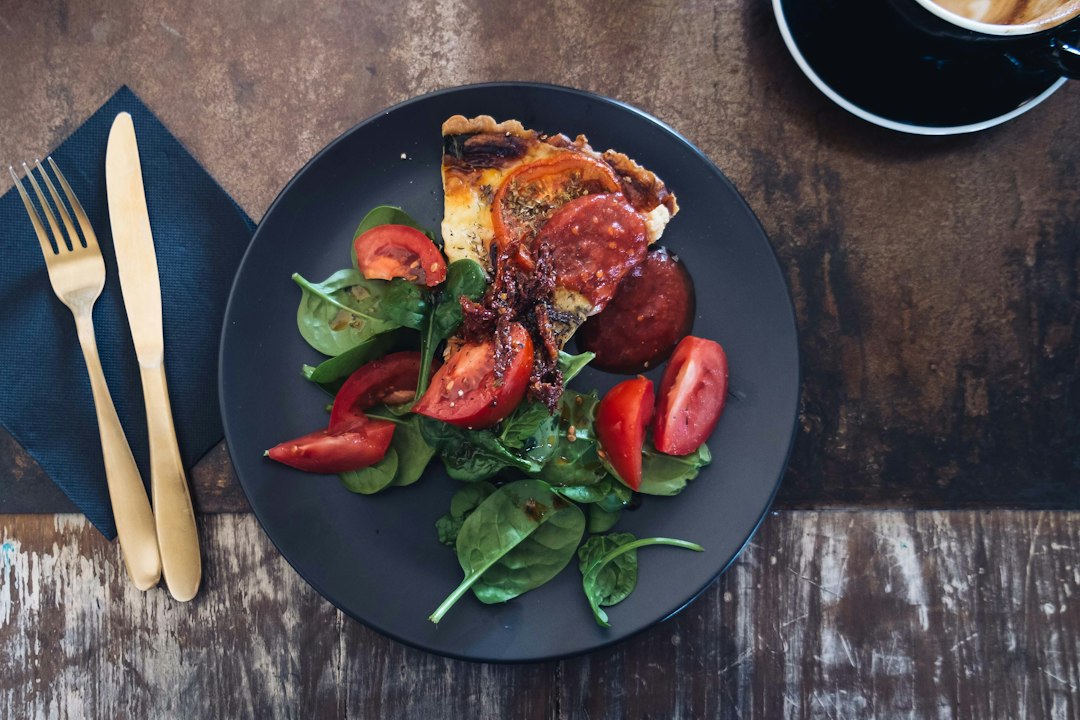The gastric sleeve surgery, also known as sleeve gastrectomy, is a surgical procedure that involves the removal of a large portion of the stomach, leaving behind a smaller, sleeve-shaped stomach. This surgery is often performed as a treatment for obesity and can help individuals achieve significant weight loss. However, following the surgery, it is crucial to adhere to a structured diet plan to ensure proper healing and long-term success.
The gastric sleeve diet is divided into several phases, with each phase gradually introducing new foods and textures. The first few weeks after surgery are particularly important, as the stomach needs time to heal and adjust to its new size. During this time, the diet consists mainly of liquids and pureed foods. As the weeks progress, solid foods are slowly reintroduced.
Key Takeaways
- The gastric sleeve diet is a crucial part of the post-surgery recovery process.
- The goals of the Week 3 Gastric Sleeve Diet include introducing solid foods and increasing protein intake.
- Foods to include in the Week 3 Gastric Sleeve Diet are lean proteins, vegetables, and fruits.
- Foods to avoid in the Week 3 Gastric Sleeve Diet are high-fat and high-sugar foods.
- A sample meal plan for the Week 3 Gastric Sleeve Diet includes breakfast, lunch, dinner, and snacks.
Goals of the Week 3 Gastric Sleeve Diet
Week 3 of the gastric sleeve diet marks an important milestone in the recovery process. By this point, most individuals have transitioned from a liquid and pureed food diet to a soft food diet. The goals of week 3 are to continue progressing towards a regular solid food diet and to practice portion control.
Gradual progression is essential during this phase to allow the stomach to adjust to larger quantities of food. It is important to remember that the stomach is still healing and may not be able to tolerate large portions or certain types of foods. Portion control is crucial during this phase to prevent overeating and ensure that the stomach can comfortably accommodate the food being consumed.
Foods to Include in the Week 3 Gastric Sleeve Diet
During week 3 of the gastric sleeve diet, there are several foods that can be included in the meal plan. These foods should be soft in texture and easy to digest. Lean proteins such as chicken, turkey, fish, and tofu are excellent choices as they provide essential nutrients while being low in fat. Vegetables such as cooked carrots, green beans, and mashed potatoes can also be included. Fruits such as applesauce and mashed bananas are good options as well.
Lean proteins are an important component of the gastric sleeve diet as they help promote satiety and preserve muscle mass during weight loss. They are also rich in essential amino acids that aid in tissue repair and healing. Vegetables and fruits provide essential vitamins, minerals, and fiber that support overall health and digestion.
Foods to Avoid in the Week 3 Gastric Sleeve Diet
While there are many foods that can be included in the week 3 gastric sleeve diet, there are also several foods that should be avoided. High-fat and high-sugar foods should be limited or eliminated from the diet as they can cause discomfort and hinder weight loss progress. This includes fried foods, processed snacks, sugary desserts, and sugary beverages.
These foods are typically high in calories and low in nutrients, making them less than ideal choices for individuals who have undergone gastric sleeve surgery. Consuming these foods can lead to weight regain and may cause digestive issues such as dumping syndrome, which occurs when food moves too quickly through the digestive system.
Sample Meal Plan for the Week 3 Gastric Sleeve Diet
Here is an example of a daily meal plan for week 3 of the gastric sleeve diet:
Breakfast:
– Scrambled eggs with spinach and low-fat cheese
– Soft oatmeal with mashed banana
Lunch:
– Grilled chicken breast with steamed vegetables
– Mashed sweet potatoes
Snack:
– Greek yogurt with mashed berries
Dinner:
– Baked salmon with roasted Brussels sprouts
– Quinoa pilaf
Snack:
– Cottage cheese with diced peaches
It is important to note that portion sizes should be small and meals should be eaten slowly to allow for proper digestion. It may also be helpful to prepare meals in advance and portion them out to avoid overeating.
Tips for Sticking to the Week 3 Gastric Sleeve Diet
![]()
Sticking to the week 3 gastric sleeve diet can be challenging, especially as the diet progresses and more foods are introduced. Here are some tips to help stay motivated and on track:
1. Set realistic goals: It is important to set realistic goals and not expect immediate results. Weight loss after gastric sleeve surgery is a gradual process, and it is important to be patient and focus on long-term success.
2. Find support: Joining a support group or seeking support from friends and family who understand the challenges of the gastric sleeve diet can be incredibly helpful. Having someone to share experiences, successes, and setbacks with can provide motivation and accountability.
3. Plan meals in advance: Planning meals in advance can help ensure that healthy options are readily available and prevent impulsive food choices. Meal prepping can also save time and make it easier to stick to portion sizes.
4. Stay hydrated: Drinking enough water is crucial for overall health and digestion. It can also help prevent overeating by promoting a feeling of fullness. Carry a water bottle with you throughout the day as a reminder to stay hydrated.
Importance of Hydration in the Week 3 Gastric Sleeve Diet
Staying hydrated is essential during the week 3 gastric sleeve diet and beyond. Adequate hydration helps prevent dehydration, which can lead to complications such as constipation, kidney stones, and urinary tract infections. It also aids in digestion, nutrient absorption, and weight loss.
It is recommended to drink at least 64 ounces of water per day, but individual needs may vary. Sipping water throughout the day rather than chugging large amounts at once can help prevent discomfort and ensure proper hydration. It may also be helpful to flavor water with lemon or other fruits to make it more enjoyable.
Exercise Recommendations for the Week 3 Gastric Sleeve Diet
Exercise is an important component of the gastric sleeve diet and can help support weight loss, improve overall health, and increase energy levels. During week 3, it is important to start incorporating light exercise into the daily routine. This can include activities such as walking, swimming, or cycling.
It is important to start slowly and gradually increase the intensity and duration of exercise. It is also crucial to listen to the body and not push too hard, as the body is still healing from surgery. Consulting with a healthcare professional or a certified personal trainer can provide guidance on safe and effective exercises during this phase.
Common Challenges and How to Overcome Them in the Week 3 Gastric Sleeve Diet
During week 3 of the gastric sleeve diet, individuals may face common challenges such as boredom with the diet plan and difficulty sticking to the plan. To overcome these challenges, it can be helpful to:
1. Experiment with new recipes: Trying out new recipes can help prevent boredom and make mealtime more enjoyable. There are many resources available online for healthy and delicious recipes that are suitable for the gastric sleeve diet.
2. Find alternative ways to cope with emotions: Emotional eating can be a challenge for many individuals. Finding alternative ways to cope with emotions such as stress or boredom, such as practicing mindfulness or engaging in a hobby, can help prevent emotional eating.
3. Seek professional help if needed: If sticking to the diet plan becomes particularly challenging, it may be helpful to seek professional help from a registered dietitian or therapist who specializes in weight management. They can provide guidance, support, and strategies for overcoming obstacles.
Next Steps After Completing the Week 3 Gastric Sleeve Diet
Completing week 3 of the gastric sleeve diet is an important milestone, but it is crucial to remember that the journey does not end there. Following a healthy diet and exercise plan is essential for long-term success and weight maintenance. It is recommended to continue working with a registered dietitian or healthcare professional to develop a personalized plan that meets individual needs.
In addition to continuing with a healthy diet and exercise plan, it may also be beneficial to consult with a personal trainer to develop a safe and effective exercise routine. Regular check-ups with the healthcare team are also important to monitor progress and address any concerns or questions that may arise.
In conclusion, the week 3 gastric sleeve diet is an important phase in the recovery process after gastric sleeve surgery. It is crucial to follow a structured diet plan to ensure proper healing and long-term success. By gradually progressing towards a regular solid food diet, practicing portion control, and incorporating healthy lifestyle habits such as regular exercise and hydration, individuals can achieve their weight loss goals and maintain a healthy lifestyle.
FAQs
What is a gastric sleeve diet?
A gastric sleeve diet is a specific eating plan designed for individuals who have undergone gastric sleeve surgery. The diet is typically divided into several phases, with each phase gradually introducing new foods and textures.
What is the purpose of a gastric sleeve diet?
The purpose of a gastric sleeve diet is to help patients recover from surgery and adjust to their new stomach size. The diet also helps patients lose weight and maintain a healthy lifestyle.
What are the different phases of a gastric sleeve diet?
The different phases of a gastric sleeve diet typically include a clear liquid phase, a full liquid phase, a pureed food phase, a soft food phase, and a regular food phase. Each phase gradually introduces new foods and textures.
What foods are allowed on a gastric sleeve diet?
The foods allowed on a gastric sleeve diet vary depending on the phase. In the early phases, patients are typically limited to clear liquids, such as broth and sugar-free gelatin. As they progress through the phases, they can introduce more solid foods, such as lean protein, vegetables, and whole grains.
What foods should be avoided on a gastric sleeve diet?
Foods that are high in sugar, fat, and calories should be avoided on a gastric sleeve diet. Patients should also avoid carbonated beverages, as they can cause discomfort and bloating.
How long does a gastric sleeve diet last?
The length of a gastric sleeve diet varies depending on the patient’s progress and the recommendations of their healthcare provider. In general, patients can expect to follow the diet for several weeks to several months after surgery.

